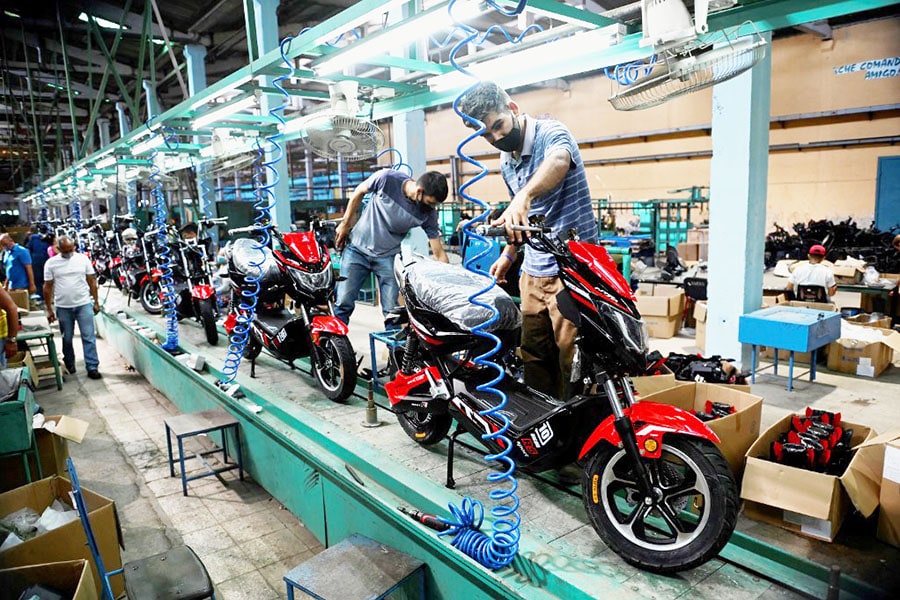
No petrol, no cars: Why Cubans are turning to electric transport
As fuel shortages and US sanctions take their toll, and even though electricity generation can be spotty, Cubans are turning to smaller, cheaper, plug-in electric alternatives
 Workers assemble motorcycles at the Angel Villareal Bravo assembly plant, better known as Minerva Cycles, in Santa Clara, in the Cuban province of Villa Clara, on April 26, 2022. Cubans are opting for motorcycles, tricycles and electric cars in the face of the public transportation and fuel shortage crisis. Image: Yamil Lage / AFP
Workers assemble motorcycles at the Angel Villareal Bravo assembly plant, better known as Minerva Cycles, in Santa Clara, in the Cuban province of Villa Clara, on April 26, 2022. Cubans are opting for motorcycles, tricycles and electric cars in the face of the public transportation and fuel shortage crisis. Image: Yamil Lage / AFP
Santa Clara, Cuba: There is a new sight on the streets of Havana: increasing numbers of electric vehicles whizzing among the old American cars so emblematic of the Cuban capital. As fuel shortages and US sanctions take their toll, and even though electricity generation can be spotty, Cubans are turning to smaller, cheaper, plug-in alternatives.
"Gasoline? Imagine. After 50 years battling to get hold of it, I don't even want to smell it anymore!" taxi driver Sixto Gonzalez, 58, told AFP atop the shining, electric-blue quadricycle with which he moves through the streets at a top speed of about 40 kilometers (25 miles) per hour.
Gonzalez has abandoned his old, combustion-engine car—one of about 600,000 registered on the island of 11.2 million people, according to official data.
The last time he tried to fill it up, he stood in a queue for eight hours.
By far the majority of cars in circulation in Cuba are American models from the 1950s—before sanctions started—and compact Ladas from the Soviet era.







